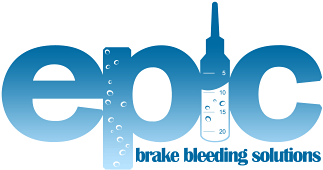To support you through the bleeding process we have gathered an array of resources from the various brake manufacturers.
Here you can find manufacturers' own bleeding instructions, videos of the various bleeding procedures and our brake bleed FAQ all in one place, right here on our site.
Manufacturers Own Bleeding Instructions
Brake Bleed Videos
Epic Brake Bleed FAQ
Why do we need to bleed our brakes?
Unless you are lucky enough to be able to change your brakes or your bike frequently, it is likely that one day you will find it necessary to bleed your brakes. Over time, brakes filled with DOT brake fluid especially will lose performance and will need to be bled in order to regain their performance.
There are various reasons why you may have to bleed your brakes: the brake system's seals have been breached (e.g. following a crash), this will allow air into the system. Shortening the brakes hydraulic hose will also mean breaching this seal, and in turn drainage of the entire system. Also DOT brake fluid will absorb moisture from the environment over time thus reducing the brake's performance.
How does air and moisture intake reduce the braking performance?
Air is a gas, gases are compressible whereas fluids are pretty much incompressible; as you pull the brake lever in a system that is air-free, all of that force should be sent to the brake calliper which activates the brake pads. If there is air within the brake system some of the pressure you exert at the lever will be wasted as the air is compressed; under such circumstances your brake lever can feel 'spongy'.
DOT brake fluid is hygroscopic, which means it absorbs water from the atmosphere at normal humidity levels over a period of time. This water contaminated brake fluid will have a lower overall boiling point than fresh DOT brake fluid. As we know brake fluid can become very hot under heavy use and can eventually 'boil'. This boiling will cause the fluid to vaporise and cause poor braking performance due to the compressible nature of vapours (gases).
What is the difference between DOT brake fluid and mineral oil?
Some brake manufacturers design their brakes to use DOT brake fluid and others to use mineral oil. As a quick reference Avid, Formula, Hayes and Hope use DOT fluid and Magura and Shimano use mineral oil. You should never use DOT brake fluid in a system designed to use mineral oil and vice versa. The two fluids are not compatible and such practice will result in corrosion of the internals of your brake set.
As mentioned earlier DOT brake fluids are hygroscopic, they absorb water from the air over time. Mineral oil, on the other hand, does not; the two liquids will repel each other and not mix, therefore any introduction of water to a mineral oil filled system will cause the water to pool and can freeze in cold temperatures causing brake failure.
Also, unlike DOT fluids, mineral oil is non-corrosive and will not harm your skin or you bikes paint finish if spilled. However DOT brake fluid has a higher boiling point than mineral oil and will therefore outperform mineral oil under extreme use.
What is the difference between DOT 3/4/5/5.1 brake fluids?
In short, DOT 3, 4 & 5.1 brake fluid is glycol-based. The main differences in these three DOT fluids are their boiling temperatures. DOT 4 has a higher boiling point than DOT 3, and DOT 5.1 has the highest boiling point of all. These fluids are compatible with one another, i.e. they can be mixed, however this is generally not advised as any remaining lower grade DOT fluid within the braking system will reduce the overall boiling point. It is therefore good practice to replace (flush out) the old fluid with new.
DOT 5 fluid (not to be confused with DOT 5.1) is a silicone based fluid and is incompatible with all other DOT fluids. DOT 5 fluid should never be used in your hydraulic mountain bike brakes. Silicone-based fluids will not mix with water and will cause pooling of any water within the system and corrosion of the internals may result.




